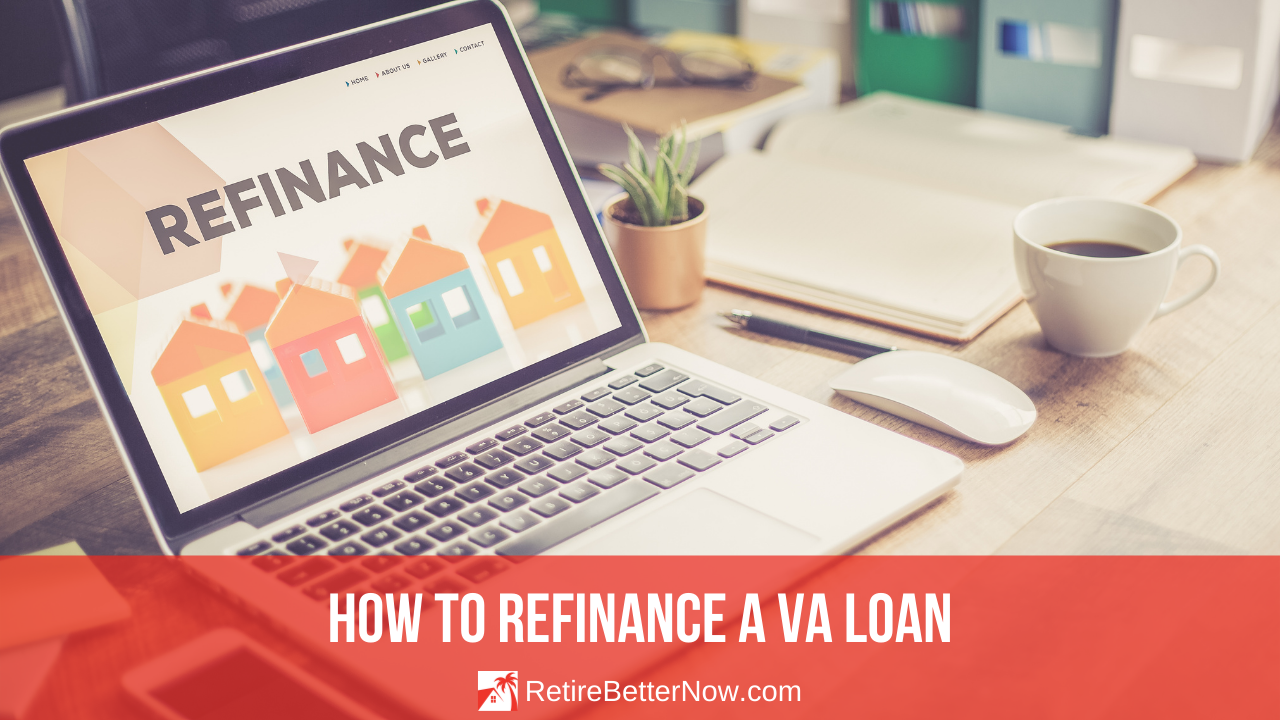
How We Make Money
The businesses whose offers you see on this website pay us. Unless our mortgage, home equity, and other home lending products are specifically prohibited by law, this compensation may have an impact on how and where products appear on this website, including, for example, the order in which they may appear within the listing categories. However, this payment has no bearing on the content we post or the user reviews you see here. We don’t include the range of businesses or loan options that you might have.

Our goal at Bankrate is to assist you in making more informed financial decisions. Although we follow stringent guidelines, this post might mention goods from our partners. Heres an explanation for . Bankrate logo.
Bankrate was established in 1976 and has a long history of assisting consumers in making wise financial decisions. We’ve upheld this reputation for more than 40 years by assisting people in making sense of the financial decision-making process and providing them with confidence regarding their next course of action.
You can rely on Bankrate to prioritize your interests because we adhere to a rigorous editorial policy. All of the content we publish is objective, accurate, and reliable because it is written by highly qualified professionals and edited by subject matter experts.
In order to give you peace of mind when making decisions as a buyer and homeowner, our mortgage reporters and editors concentrate on the topics that matter most to consumers: the newest rates, the greatest lenders, navigating the homebuying process, refinancing your mortgage, and more. Bankrate logo.
You can rely on Bankrate to prioritize your interests because we adhere to a rigorous editorial policy. Our team of distinguished editors and reporters produces truthful and precise content to assist you in making wise financial decisions.
We value your trust. Our goal is to give readers reliable, unbiased information, and we have established editorial standards to make sure that happens. Our reporters and editors carefully verify the accuracy of the editorial content they produce, making sure you’re reading true information. We keep our editorial staff and advertisers apart with a firewall. No direct payment from our advertisers is given to our editorial staff.
The editorial staff at Bankrate writes for YOU, the reader. Providing you with the best guidance possible to enable you to make wise personal finance decisions is our aim. We adhere to stringent policies to guarantee that advertisers have no influence over our editorial content. Advertisers don’t pay our editorial staff directly, and we carefully fact-check all of our content to guarantee accuracy. Thus, you can be sure that the information you’re reading, whether it’s an article or a review, is reliable and reputable. Bankrate logo.
How we make money
You have money questions. Bankrate has answers. For more than 40 years, our professionals have assisted you in managing your finances. We always work to give customers the professional guidance and resources they need to be successful on their financial journey.
Because Bankrate adheres to strict editorial standards, you can rely on our content to be truthful and accurate. Our team of distinguished editors and reporters produces truthful and precise content to assist you in making wise financial decisions. Our editorial team produces factual, unbiased content that is unaffected by our sponsors.
By outlining our revenue streams, we are open and honest about how we are able to provide you with high-quality material, affordable prices, and practical tools.
Bankrate. com is an independent, advertising-supported publisher and comparison service. We receive payment when you click on specific links that we post on our website or when sponsored goods and services are displayed on it. Therefore, this compensation may affect the placement, order, and style of products within listing categories, with the exception of our mortgage, home equity, and other home lending products, where legal prohibitions apply. The way and location of products on this website can also be affected by other variables, like our own unique website policies and whether or not they are available in your area or within your own credit score range. Although we make an effort to present a variety of offers, Bankrate does not contain details about all financial or credit products or services.
- If you already have a VA loan, you can refinance it to get a lower interest rate, extend the loan term, or use the equity in your house.
- You must fulfill certain requirements related to service, income, and credit score in order to be eligible for a VA mortgage refinance.
- Interest Rate Reduction Refinance Loans (IRRLs) and VA cash-out refinances are the two main ways to refinance VA loans.
It may make sense for you to refinance your existing mortgage into a VA loan if you are a veteran, active-duty military member, or an eligible spouse. Fortunately, if you meet the lender’s requirements and the military service requirement, it’s not too difficult to qualify for a VA loan through refinancing.
What is VA loan refinancing?
A home loan product backed by the Department of Veterans Affairs (VA) is known as a VA loan or mortgage refinance. It permits you to exchange your existing loan for a new one with different conditions. You might be able to modify the loan term, get a lower interest rate, or turn your home equity into cash depending on the kind of loan you choose.
Furthermore, you have the option to convert from an adjustable-rate mortgage (ARM) to a VA fixed-rate mortgage if you would prefer more consistent monthly payments.
Types of VA loan refinancing
If you decide to use a VA loan for a refinance, you have two primary options:
- Homeowners with existing VA loans who want to obtain a lower interest rate can apply for an Interest Rate Reduction Refinance Loan (IRRRL), also known as a VA streamline refinance.
- A VA cash-out refinance allows any mortgage holder to take out a new loan to replace their existing one and access the equity they have accrued in their home.
| VA IRRRL | VA cash-out refinance | |
|---|---|---|
| Primary Purpose | To secure a lower interest rate or switch from an ARM to a fixed-rate mortgage | To tap into your home equity and convert it into cash |
| Property Type | Any residence: primary, vacation home, etc. (if previously occupied) | Primary residence |
| Requirements |
|
|
| Closing Costs | Can be rolled into the loan or paid by the lender | Must be paid upfront |
| Loan Restrictions | Limited to VA-backed home loans | Can be used for conventional and VA-backed loans |
Who qualifies for a VA mortgage refinance?
As the name suggests, VA loan refinancing is accessible to U.S. S. military. To be more precise, the following is required in order to be eligible for VA refinance loans:
- Service: Generally speaking, you can apply for a VA home loan after serving on active duty for 90 days during a designated conflict, six years in the National Guard or Reserves, or 181 days continuously during a period of peace. Unless there are specific exceptions, you must have received an honorable discharge as a veteran in order to be eligible. If you were married to a service member who died while performing their duty or as a result of a disability related to their service, you may also be qualified for a VA loan. A Certificate of Eligibility (COE) attesting to your military service is required for VA home loans. You can obtain this form online through a unique system used by your lender, or you can request one online or by mail through the U.S. S. Department of Veteran Affairs.
- Income: Although the requirements for approval are typically less stringent than those for conventional mortgages, borrowers must still demonstrate that they have enough income to repay their loans. Additionally, you’ll need a debt-to-income (DTI) ratio that the lender is comfortable with. Generally speaking, this means a ratio of no more than 41%, though some lenders have less stringent requirements.
- Credit score: The VA doesn’t set minimum credit score guidelines. However, in general, to be approved for a VA loan or a VA loan refinance, your credit score must be at least 620 (the Interest Rate Reduction Refinance Loan, or IRRRL, does not require underwriting). Be aware that certain lenders may need a higher credit score and have overlays, or stricter requirements. Be ready to pay a significantly higher interest rate on your loan if the lender accepts a credit score of 600 or less.
- Property type: You must use the VA mortgage loan to buy a primary residence when you apply for one. A VA mortgage cannot be used to buy second homes or rental properties.
- Time restrictions: If you use a VA loan, you have to move into the new home within what the VA considers to be a “reasonable time,” which is typically 60 days following the home’s closing. But if certain requirements are met, you can submit a claim for occupancy after 60 days but no later than 12 months. Seldom is occupancy after a year of closing on a property regarded as “reasonable” by the U S. Department of Veteran Affairs.
Benefits of refinancing with a VA loan
For those who are eligible, VA home loans are very popular because of the many advantages of refinancing with one of these loans. The following are some additional benefits of refinancing with a VA loan:
- No requirement for mortgage insurance: Even in cases where there is no down payment, VA home loans do not demand the borrower to pay mortgage insurance on top of the monthly mortgage payment.
- No cash up front: VA loans don’t require a down payment, which includes refinancing mortgages. You still have to be ready to cover the closing costs for your refinance, though.
- Minimal up-front expenses: Funding fees for VA loans are usually borne by the borrower and can be rolled into refinancing closing costs. (Since you’ll be financing these expenses, selecting this option will result in higher interest rates.) If you meet certain requirements or are the surviving spouse of a veteran who died in service or from a disability resulting from military service, you may be able to avoid paying the funding fee entirely.
- Reduce interest costs: VA home loan interest rates are typically competitive and frequently less than those that you could be eligible for with a traditional refinance. However, make sure to do the math to determine any possible savings because some homeowners, even with a lower interest rate, end up paying more in interest when they refinance and reset the loan term.
- Flexible qualifying requirements: It’s simpler to qualify for a VA loan thanks to its laxer income and credit requirements. (Note: VA cash-out refinance loans have stricter eligibility requirements.)
- No prepayment penalties: If you choose to pay off your house early, you can do so without incurring additional costs or “gotchas” when using a VA loan. ”.
- Additionally, if you started out with an adjustable-rate mortgage and would like a more consistent monthly payment to help you manage your budget, you have the option to convert to a VA fixed-rate mortgage.
How to refinance into a VA loan
It is relatively simple to refinance into a VA loan. However, both options available require slightly different steps to obtain.
Interest Rate Reduction Refinance Loan (IRRRL)
Refinancing an existing VA loan into a new VA loan with a lower interest rate is possible with the VA streamline refinance option or the Interest Rate Reduction Refinance Loan (IRRRL). It’s also a popular tool among homeowners to convert their VA adjustable-rate mortgage (ARM) to a fixed-rate mortgage.
Here are some other benefits to consider:
- There is no credit underwriting or appraisal required to obtain this loan.
- You’re not required to pay closing costs upfront.
- When compared to VA new-purchase and construction loans, the funding fee is lower.
In terms of costs, you’ll pay a 0. In addition to the lender’s closing costs, which can be rolled into the new loan, there is a five percent fee to obtain an IRRRL. Additionally, some lenders offer to cover your closing costs in return for a higher interest rate.
But only if your new interest rate is less than your existing rate can you use the VA streamline mortgage. That implies that before you can purchase a VA IRRRL, you might need to wait for interest rates to decrease. There is one exception: the rate on the new loan could be higher than the ARM rate if you are moving from a VA ARM loan to a fixed-rate loan.
Additionally, the amount you can borrow cannot exceed the balance of your current mortgage. This implies that you cannot obtain additional funds, as is frequently the case when refinancing. For that, you’ll need a VA cash-out refinance.
Current homeowners can refinance their mortgages and remove all or part of their accumulated equity with a VA cash-out refinance loan. The VA will guarantee loans up to 100% of the home’s value, so you can use this kind of loan to refinance an existing VA loan or a conventional mortgage. Similar to other VA loans, you must have a Certificate of Eligibility (COE) and fulfill the requirements for military service.
It can be beneficial if:
- You wish to convert your conventional loan into one backed by the VA.
- You want to upgrade your house in a way that will raise its value.
- Your goal is to pay off costly debt and save a significant amount of interest.
If you’re thinking about doing this, be realistic about your spending patterns and have a specific financial objective in mind. For example, if you plan to use the money to pay off credit cards, you must be certain that you won’t ever again have an unmanageable balance.
As of April 2023, the funding fee for a first-time VA home loan is $2. 15 percent. However, if you have previously utilized the VA loan benefit, the funding fee rises to three 3 percent. You’ll also be responsible for closing costs.
Should I refinance into a VA loan?
It depends on your unique financial situation. VA loans have a number of benefits that might make them a better option. Compared to other refinancing options, you’ll probably receive a lower interest rate and more reasonable closing costs. In addition, if you refinance into a VA loan, you won’t have to pay mortgage insurance. It’s possible that you won’t even need to make a down payment.
An IRRRL might even let you transfer to a new loan without having to go through the underwriting process if you already have a VA loan that you want to refinance. A VA cash-out refinance can also be a better choice if you’re looking to access your home equity because you could be able to withdraw up to 100% of the home’s appraised value.
However, there are unique costs (those funding fees) and restrictions. Finally, you have to weigh the costs associated with these loan products to decide if refinancing into a loan backed by the VA is a wise financial decision.
Next steps to get a VA loan
A VA loan calculator can help you determine how much your new mortgage payment might be if you currently have a conventional mortgage or a VA loan and want to refinance into a VA loan with better rates and terms. It is imperative that you collaborate with a lender who has been approved by the VA for any type of VA loan or refinance. VA loans are also available from a lot of banks, credit unions, and online lenders; however, you should think about working with lenders who specialize in VA loans.
If you’re not sure where to begin, look through our list of VA-approved lenders and speak with your family members or fellow service members about their VA loan experiences. Compare loan offers carefully because, in the end, loan providers, not the federal government or the VA, determine the rates and terms of these loans, just like they do with any other mortgage product.



FAQ
Can a VA loan be used to refinance?
With a cash-out refinance loan backed by the VA, you can exchange your existing loan for a new one with different terms. A VA-backed cash-out refinance loan can be appropriate for you if you wish to withdraw cash from your home equity or refinance a non-VA loan into a VA-backed loan.
Is VA refinancing worth it?
Experts concur: If you fit the recommended requirements and plan to use the funds for a purpose that will ideally increase your overall wealth or reduce your debt, then pursuing a VA loan home equity cash-out refinance could be worthwhile.
How much equity do you need to refinance a VA loan?
According to current VA guidelines, you must own a minimum of 2010% equity in your home; however, certain lenders may permit you to borrow up to 20100% of your home equity. VA funding fee. You may pay between 2. 3% and 3. There is a funding fee of 6%, which is charged to offset the tax payer cost of the VA loan program. Closing cost cap.
Can I refinance a VA loan to FHA?
VA streamline refinances are limited to VA to VA transactions; however, VA loans can be used to refinance conventional and FHA mortgages, among other types of existing loans. When current property values are a concern, refinancing from a conventional to a VA loan is advantageous, though it is uncommon.
Read More :
https://www.va.gov/housing-assistance/home-loans/loan-types/cash-out-loan/
https://www.bankrate.com/mortgages/refinance-into-a-va-loan/
